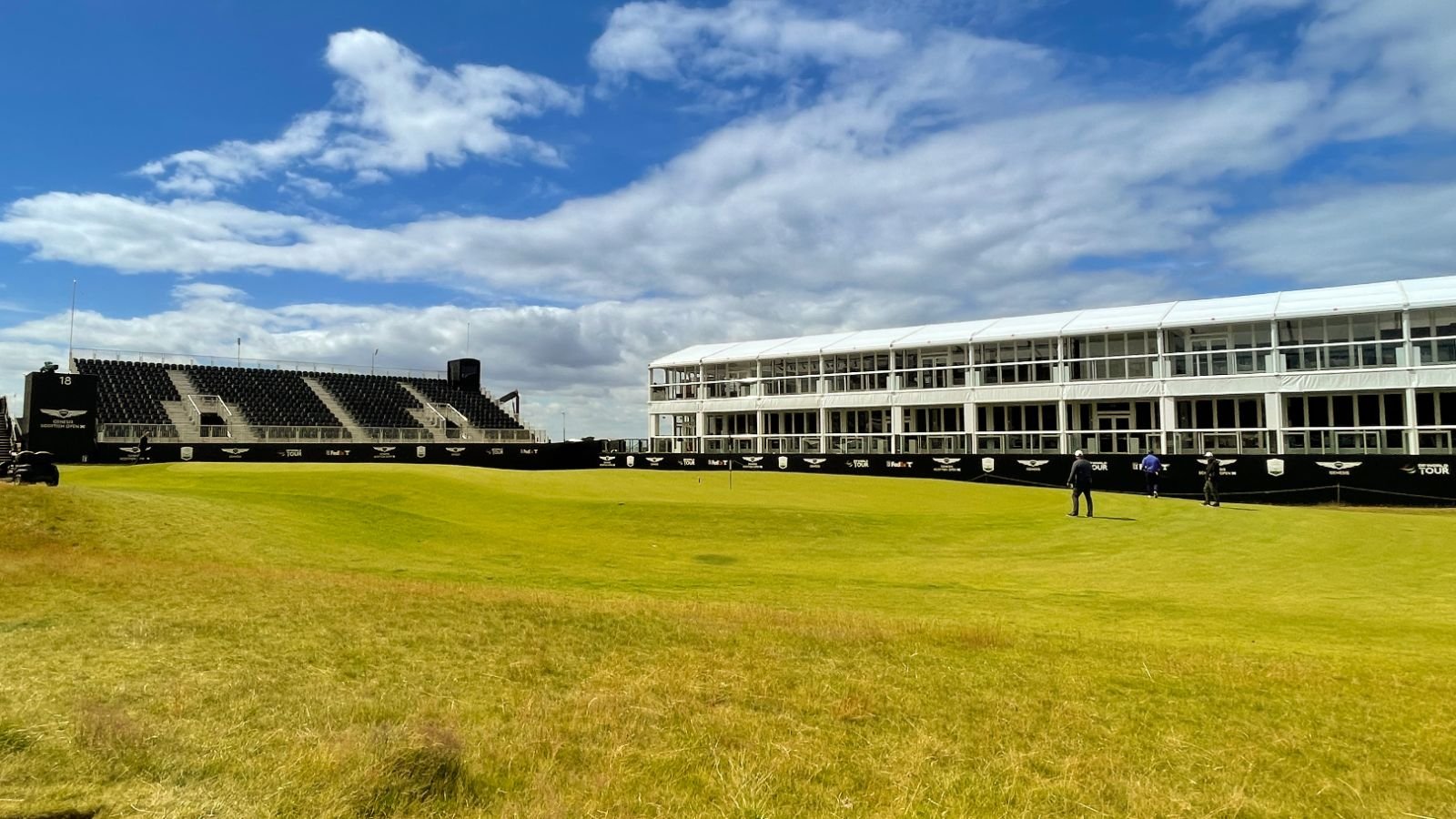When Tom Doak set about designing The Renaissance Club, host to this week’s Scottish Open, it was a slightly unusual challenge. He explains, ‘My client was always interested in hosting a big professional event, so I had to respect that and change my design philosophy a bit, since I normally don't care at all about that’.
The hallmark of many Doak courses is width and accessibility for players of all abilities, whereas The Renaissance provides a sterner test for amateurs. Yet, over the three editions of The Scottish Open at the venue so far, the winning scores have been low. Bernd Wiesberger won at -22 in 2019, Aaron Rai at -11 in 2020 (in a Covid-hit field) and Min Woo Lee prevailed with -18 last year. This has led to grumblings from players that the course has just been too easy and not a good enough test. However, it is safe to say that none of these tournaments were played in typical East Lothian conditions. The course has played soft (or sodden in 2020) with little in the way of the strong breezes that are normal on Scotland’s Golf Coast.
Owner Jerry Savardi was very keen to ensure the venue continued to host the event and enlisted Padraig Harrington to work as a ‘player consultant’ alongside Doak in the development of the course, to ensure it produced the challenge that the players were looking for a week ahead of The Open.
This commitment worked and The European Tour stuck with the venue when new sponsors Genesis came on board. 2022 sees the fourth consecutive year of the Scottish Open at The Renaissance Club.
Doak and Harrington spent time at the course early last year, and their associate, Clyde Johnson, walked the course again during the week of the 2021 Scottish Open. Johnson was on site. on his digger, from August, making the changes the players will find this week.
Doak is clear that the modifications are really aimed at the Tour pros. 'The general theme of the changes is to keep the players honest when they are hitting driver, especially at the longer holes. There were a bunch of holes where they could bail away from a bunker on one side and have nothing to worry about on the other - putting bunkers 320 yards off the tee was not really a concern when we built the course originally’.
That change is obvious from the off. There is a new bunker on the right hand side of the first fairway that will focus the mind from the very first tee shot. I stood by the bunker for 20 minutes this morning (Tuesday) as players were getting ready for this week’s tournament and four of the eight players I watched ended up in the sand.
A new bunker lies in wait for players on the right hand side of the first fairway
Defending champion, Min Woo Lee, used his practice round to take stock of the changes and believes they will be a challenge to the field, ‘They put two bunkers, one right of one and one right of seven….where everyone hits it. Hopefully the wind blows harder so I can hit it over, which it was like this morning. So it could play more of an advantage for longer hitters’. However, without wind assistance, the new bunkers will be in play for all but the very longest players.
Players will also notice a change if they veer offline to the right on the second hole. The rough now has quite a rippled, uneven movement to it. Johnson, who did the shaping, explains, ‘Tom’s time with Brooks Koepka at Memorial Park in Houston encouraged him that uneven stances in rough are particularly difficult for pros, but the average golfer will likely barely notice the difference. The right of the 2nd was a good place for this, especially as the soils there were heavier and less ideal for building a bunker.’
Rippled rough on the right of the second hole
One of the most obvious changes comes at the 10th hole - or the 7th as it is in the normal routing. Trees have been cleared on both sides of the fairway, and a new dune complex built on the right. If players go there they will find it hard to get the ball to the green. The before and after is striking:
The 10th (tournament) hole pre and post the recent changes
Johnson spent a long time working on this hole. He explains the objective, ‘The bigger dune on the right is to discourage a player who has driven into the rough from advancing the ball as far as the green - the stance will be from a downhill low, and that dune rises up pretty quickly’.
Dunes to the right mean a wayward drive will make it harder to reach the green on 10 this year
Tour pro, Richie Ramsay, has been a member at The Renaissance since its inception and knows the course better than any other member of the field this week. He approves of the changes when he says, ‘I feel like they have gone the best way with evolving the course - targeted bunkering to give distinct risk and reward holes are key. The changes will put more of a premium on driving and therefore mentally you will have to focus more off the tee, particularly on the opening holes.’.
One place you won’t see any changes yet is on the greens. Doak says, ‘The other thing that makes it easy for them to score low is that the greens are relatively big and perfectly conditioned, so, if in doubt, players just play safely to the middle of the greens and still have chances to make birdie. But we really can't change a green, because there is just not enough good growing weather between the end of the tournament one year and the start of the event the next. It's a very short growing season and the tournament falls right in the middle of it’.
It’s an interesting problem. Owner Jerry Savardi has made no secret of the fact that he would like to see The Renaissance become the long term host of the Scottish Open, but maybe a year off would help Doak make changes which would strengthen the course further.
While the putting surfaces themselves haven’t been changed, Harrington had some other input which has been acted on. Johnson says, ‘Padraig had some particularly interesting ideas in regards to mowing lines - encouraging a band of semi-rough to cut across the the run-off areas, so that the pros were forced to chip, while the members could still putt through it. Doing that where it wouldn’t look contrived was a trickier task, though there was a spot for it on the 15th where you could make the pros chip if they’d bailed on the tee shot. Right of that green is death!’.
It’s a subtle change but one which will make the test this week all the more exacting.
Adrian Otaegu practicing his chipping from the new band of semi-rough on 18 in Tuesday’s practice round
Doak is clear though that the biggest factor in the score this week will be the weather, ‘Padraig Harrington and I have discussed some other ideas, but all parties agree that we are 0 for 3 in seeing the normal windy conditions common to East Lothian and that we shouldn't over-react to the low scoring until we see how the course holds up under normal conditions’. It’s been a dry spring generally in the county, but recent rain has softened things up a little.
Ramsay explains that the club is working hard to ensure the conditions are as good a preparation for The Open as possible. ‘The course is getting plenty of sand during the winter to build up that firm and fast feel. I would also say that a good driving course with run offs and good putting surfaces are key to Open preparation. The ground game at RC is still something that will play its part instead of one dimensional play we can be used to week in week out’.
The field this week for the Scottish Open is incredible, the strongest ever seen for a European Tour event outside of the WGC and Majors. Whether The Renaissance becomes the event’s permanent home is yet to be seen. It isn’t a traditional links golf coursem and for some that will be too big a hurdle to get over. One thing is clear though, Savardi along with Doak and his team will do their utmost to to make sure the course is the best possible test.






